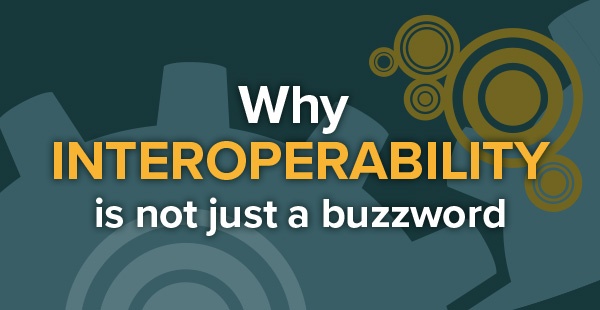Share this
Subscribe by email
by Core Solutions on October 3, 2016

Among the hottest topics in healthcare and technology today is the concept of interoperability – and we are ready to boldly make the case that it is not just a buzzword, but rather a progressive movement in healthcare information technology (HIT) worldwide. The essence of interoperability set forth in layman’s terms by Scott Wallace, JD, MBA, is simply, “personal health information, entered into a system once, becomes available to patients wherever they are and whenever they need it.” Today, the mandate for electronic health records (EHRs) is the driving force behind this concept, helping to advance population health and information management to achieve improved outcomes across the healthcare ecosystem.
On April 5, 2013, the HIMSS Board approved the following definition of interoperability: In healthcare, interoperability is the ability of different information technology systems and software applications to communicate, exchange data, and use the information that has been exchanged. Data exchange schema and standards should permit data to be shared across clinicians, lab, hospital, pharmacy, and patient regardless of the application or application vendor. Interoperability means the ability of health information systems to work together within and across organizational boundaries in order to advance the effective delivery of healthcare for individuals and communities.
The description includes three definitive levels of HIT interoperability, including:
According to the latest data brief from the Office of the National Coordinator for Health IT in 2015, 52 percent of hospitals can electronically find patient health information, 85 percent can send patient summary of care records, 65 percent can receive such records and 38 percent can use or integrate those records into their own EHRs without manual entry. Additionally, more than a quarter conduct all four of these key domains of interoperability, up from 23 percent, in 2014. As additional government mandates and successful patient and clinician outcomes emerge, interoperability will continue to infiltrate the healthcare ecosystem, shifting from its state as a buzzword to an industry fundamental.
For more information on interoperability, take a look at the sources below: